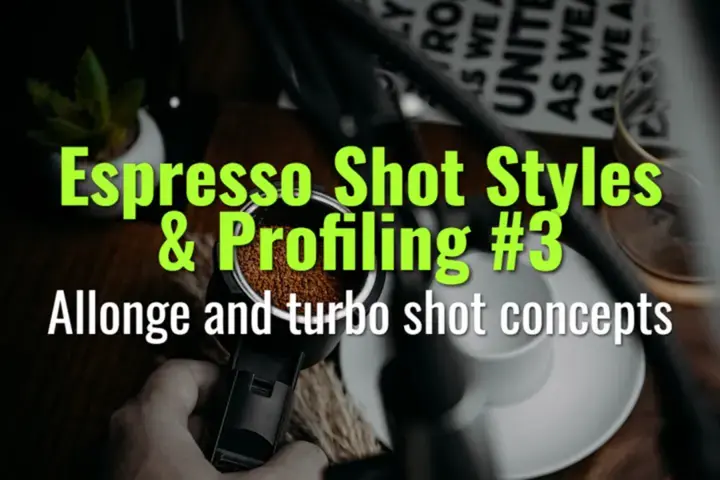Allonge and turbo shot concepts
Two modern espresso styles—allongé and turbo shot—their brewing parameters, taste profiles, and why baristas experiment with them.
- Coffee Basics Nerds
- 2 min read
Article 3 of 12 in Espresso Shot Styles & Profiling/

Allongé (French-Canadian Style)
- Definition: A long espresso shot, similar in idea to a lungo but executed with lighter roasts and careful technique.
- Ratio: 1:4 – 1:5 (e.g., 18 g in → 72–90 g out).
- Time: 40–60 seconds, slower and gentler extraction.
- Flavor: Tea-like clarity, delicate acidity, aromatic and nuanced.
- Use Case: Highlights terroir in light roasted coffees with extended extraction windows.
Turbo Shot
- Definition: A newer style popularized in specialty coffee, designed for speed and clarity.
- Ratio: 1:2.5 – 1:3 (e.g., 18 g in → 45–55 g out).
- Time: 15–20 seconds, much faster than traditional espresso.
- Pressure & Flow: Often higher flow rate, lower resistance puck (coarser grind).
- Flavor: Clean, bright, sweet, lower bitterness, but less body.
- Use Case: Efficient in service environments; highlights fruit-forward coffees.
Key Differences
- Allongé: Long, extended extraction, nuanced and delicate.
- Turbo Shot: Quick, fast-flowing extraction, bright and accessible.
- Balance: Allongé emphasizes aromatic complexity; turbo emphasizes sweetness and clarity.
Practical Tips
- Allongé: Use light roasts, higher brew temps, and careful puck prep to avoid channeling over long extraction.
- Turbo: Use slightly coarser grind, strong puck prep to prevent uneven flow.
Summary
The allongé and turbo shot expand espresso styles beyond ristretto–lungo. Allongé delivers delicate, tea-like extractions over long times, while turbo shots provide fast, sweet, and bright espresso in service-friendly workflows.